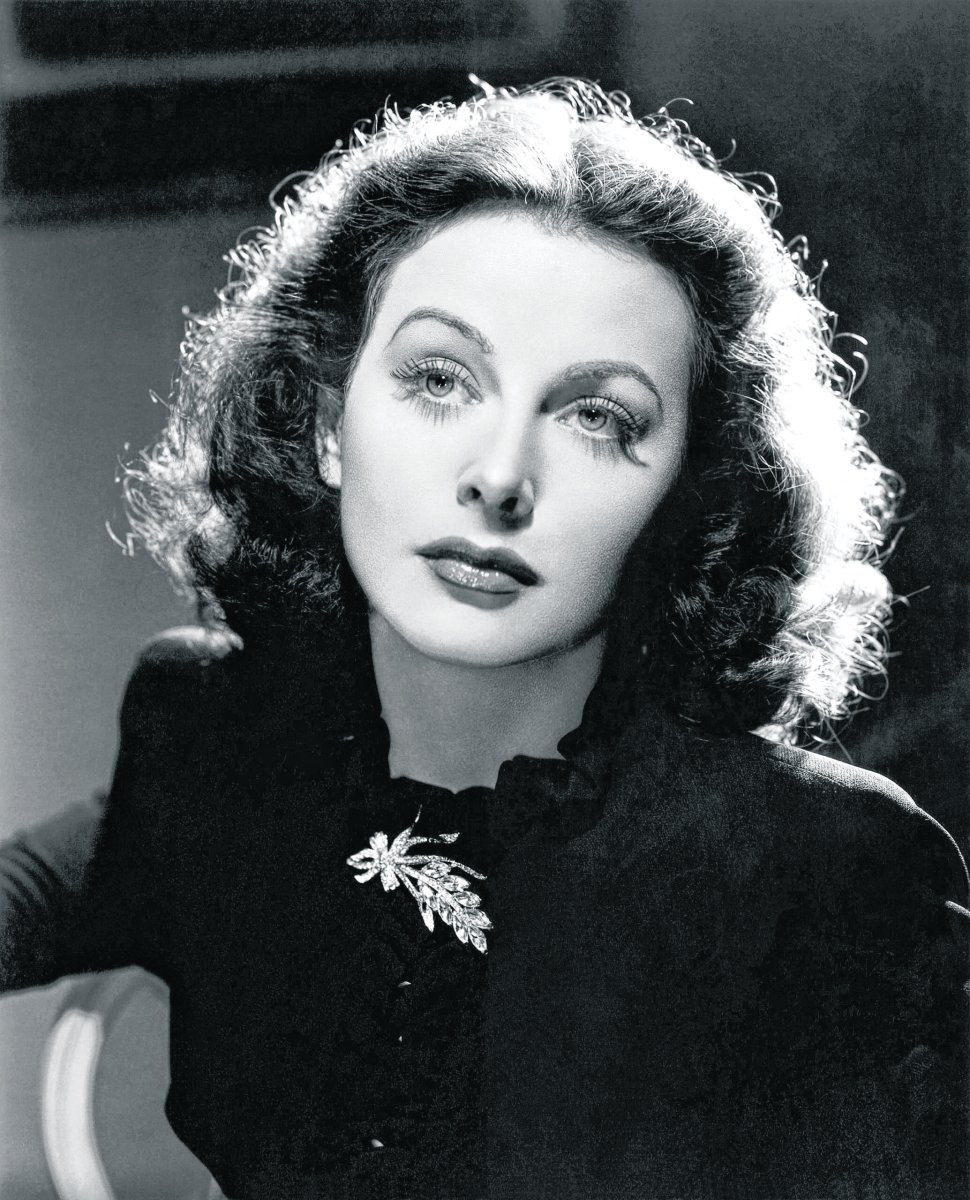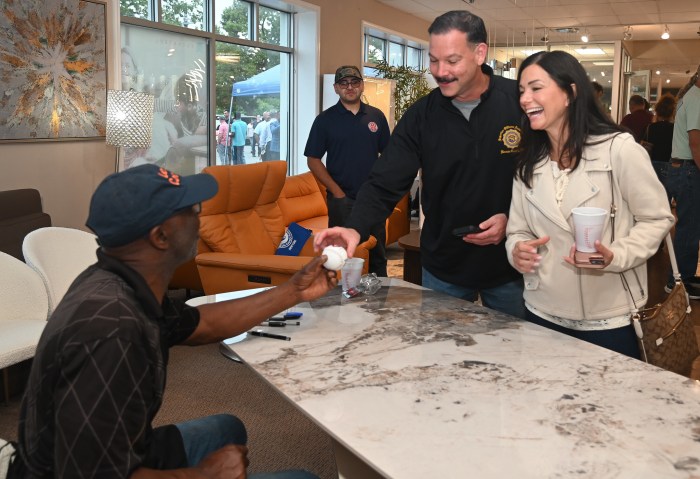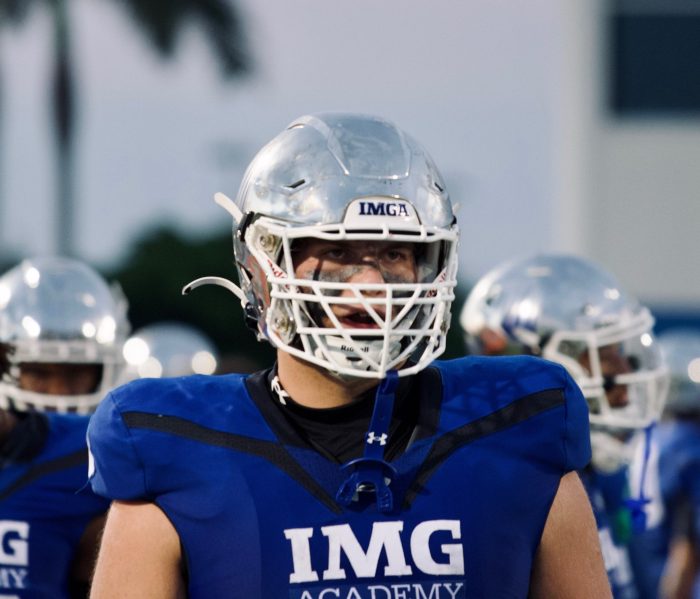Hedy Lamarr: Not Just A Pretty Face
The cell phone. GPS. Wi-Fi. Bluetooth. These devices have revolutionized communications worldwide because they are (mostly) easy to use, (sometimes) affordable, and (usually) save time. No wonder they’re so popular — and, in many cases, essential.
But where did these life-changing gadgets come from? Most people might think it was some mad scientist toiling away in a laboratory who came up with the idea.
Think again: The technology that enables them was invented and patented by a movie star.
Hedy Lamarr lit up the silver screen with her radiant beauty during the Golden Age of Hollywood — and she co-designed the underlying technology that paved the way for modern communications technology. Later in life, the genius of invention would spend summertime in Southampton, as the press and public tried to get up close to the actor described by Metro-Goldwyn-Mayer head Louis B. Mayer as “the most beautiful woman in the world.”
NO STRANGER TO SCANDAL
When Hedwig Eva Maria Kiesler was a teenager in her native Vienna, her creativity was evident: She enrolled in a costume-designing school and designed dresses, studied acting, and, entranced by movie magazines, at 16 she debuted in a small movie. Several years later, in 1930, the strong-willed Jewish beauty starred in a controversial film that would shock many: Ecstasy, a mostly silent 1933 film. Because she appeared nude and in a lovemaking sequence, the film was banned in New York City and many parts of the U.S. and condemned by the pope.
Later that year, at 19, she married Fritz Mandl, an Austrian arms manufacturer who amassed a fortune from selling weapons to the Nazis. He was so upset by her facial expressions of eroticism in Ecstasy’s sex scenes that he tried buying up all copies of the film. In 1937, with Europe’s anti-Jewish laws strengthening, and Mandl becoming more controlling of her, she fled to New York City. The actor who wrote, “My face has been my misfortune,” was determined to prove that she was more than merely beautiful. When photographers turned out to meet her as she arrived in America, she wore a long skirt and would not show her knees.
After moving to Hollywood, she made her first American film. Producers saw her as glamorous, exotic, and sultry: In one film, she seduced Clark Gable, and in another, famed director Cecil B. DeMille had her wear a clinging gown made of feathers from his pet peacocks. But acting was not her first love: Years later, as The New York Times reported, she told columnist Sheila Graham, ”I’m not so crazy about acting,” adding, ”All that makeup and getting up so early.”
“IMPROVING THINGS COMES NATURALLY TO ME”
When the cameras stopped rolling, she turned to her creative nature, and found a kindred spirit with legendary film producer Howard Hughes. They dated, and the business magnate/pilot cultivated Lamarr’s genius by setting up scientific equipment in her on-set trailer so she could tinker between scenes. Among her inventions: a new wing shape for Hughes’ planes and a fluorescent dog collar. Designing was easy for her; as she put it, “I don’t have to work on ideas; they come naturally. … I have an inventive mind.”
The inventive gears kept turning as she starred in films in the 1930s and 1940s. After all, as a 5-year-old, she had dissembled and reassembled a music box to figure out how the machine worked. She once said, “Improving things comes naturally to me.”
In 1940, she met composer George Antheil in Hollywood, and they designed a communications system that would become the underlying technology of the cell phone. In 1942, with World War II spreading, their frequency-hopping Secret Communications System received a U.S. patent. Their goal: Keep the Allies’ radio-guided torpedoes from being jammed by the Germans. But the U.S. Navy decided against using their invention and the patent expired after the war.
Lamarr used her fame to aid her adopted country by selling war bonds at rallies. After the war ended, she joined the Long Island social set in the Hamptons, spending summers in a rented Southampton cottage in 1950. She took painting lessons with her artist friend Franz Bueb, played golf at celebrity tournaments, served as a judge for a children’s costume contest at the Ladies Village Improvement Society fair at Mulford Farm, and dined at Herb McCarthy’s Bowden Square restaurant.
Around that time, she made headlines again when she claimed that at least $250,000 worth of diamond and pearl jewelry had been stolen from her hotel room at the Sherry-Netherland hotel in Manhattan. For four days she avoided detectives and reporters, until finally granting an interview on the lawn of her Southampton cottage.
She became an American citizen in 1953 and made her last film in 1958. In her later years she was described as a legally blind, moody recluse — The New York Times described her private life as “messy and sad” — who rarely left her suburban Orlando home. She had been married and divorced six times but died alone in 2000 at age 86.
The development of her frequency-hopping technology led to her posthumous induction into the National Inventors Hall of Fame in 2014. Her patent was rediscovered during the 1962 Cuban missile crisis and has been cited more than 60 times, according to the Science and Media Museum.
Neither Lamarr nor her inventing partner Antheil received any compensation for the use of their invention.

































